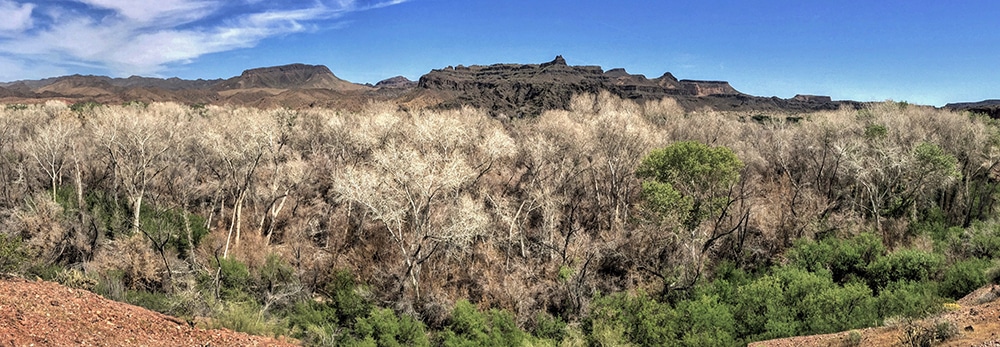Evolutionary theory has long held that natural selection largely operates at the level of individuals. Findings from Northern Arizona University researchers, recently published in the Annual Review of Ecology, Evolution, and Systematics, suggest that selection can also occur at multiple levels to shape whole communities. This multi-level selection arises from the interactions of key species that cascade to alter communities and ecosystems.
For example, unraveling the evolution of complex forest communities that are home to thousands of interacting species is crucial to understanding the fundamental principles that organize life on Earth. Genetically based traits, such as tree chemistry and leaf flush or bud set, often drive interactions among species in these communities. These types of complex interactions require a more elaborate conceptual framework than individual selection alone.
“Our findings are important for understanding evolutionary processes, particularly during the current period of rapid environmental change resulting from the effects of climate change,” said Tom Whitham, Regents’ Professor in the Department of Biological Sciences and the study’s lead author. “If selection is happening at a community level, as our findings indicate, then human-caused climate change could eliminate whole communities which is particularly troubling, as it will have consequences for entire ecosystems.”
The authors present studies of complex natural systems to show how community evolution unfolds. For example, drought-tolerant pinyon pines support a group of soil fungi that differs from drought-intolerant pinyon trees. Before the record drought of 2002, drought-intolerant trees predominated, but these trees and their associated fungi suffered three times greater mortality than drought-tolerant trees.
This selection event dramatically shifted the composition of pinyon pine and their fungal communities toward drought-tolerant genotypes, resulting in community-level selection. This type of rapid community evolution is consistent with selection operating at multiple levels to produce a more resilient community in the face of climate change.
“An important research frontier will be quantifying genetic variation and structure among community members to understand exactly how complex systems evolve in response to change,” said Stephen Shuster, professor in the NAU Department of Biological Sciences. “Unfortunately, but also fortuitously, during this time of unprecedented environmental change, large-scale die-offs, dominance of invasive species and other alterations are occurring that provide ideal opportunities to evaluate community evolution in real time.”
“Ultimately, knowing how communities and ecosystems evolve will be crucial in mitigating global change,” said biological sciences professor Gerard Allan. “If the species in communities are only loosely interlinked, then the loss of one species may not have major consequences, but if community members evolved together, then they must be conserved as an interactive unit.”
“Our findings can be used not only for better understanding of how communities evolve but also provide important insights for future restoration efforts,” said Hillary Cooper, a co-author and post-doctoral scholar. “For natural systems with complex genetics-based linkages like riparian habitats in Arizona, restoration projects should use species derived from the same site as they have evolved together and perform best when planted as an adapted unit.”
NAU researchers are leaders in the field of community genetics, which seeks to understand the genetic-based interactions that influence the evolution of entire communities.
“With this research, Professor Whitham and collaborators have made an important contribution to understanding complex interactions within communities, and informing eventual mitigation strategies. Publication of this work in Annual Review, a top peer-reviewed journal, reflects the exceptional caliber of research done by this team at Northern Arizona University,” said Vice President for Research David Schultz. “NAU has continued to increase the scope and impact of research particularly within our core strengths in biology, forestry and ecological science, and this work is a clear success of those core strengths and our outstanding researchers.”
All the authors are associated with the Center for Adaptable Western Landscapes, or CAWL, which was established in May. CAWL was created to promote robust scientific research to enhance sustainable management of ecological populations, communities and landscapes and to develop solutions to ecological problems across the American Southwest and Colorado Plateau.
The National Science Foundation, Bureau of Reclamation and others provided financial support for the research. NAU also has invested in critical infrastructure that makes this research possible, including the Southwest Experimental Garden Array, or SEGA. SEGA is a genetics-based research platform that allows scientists to quantify the ecological and evolutionary responses of species and communities to changing climate conditions using emerging technologies.
Lara M. Schmit
Center for Adaptable Western Landscapes




